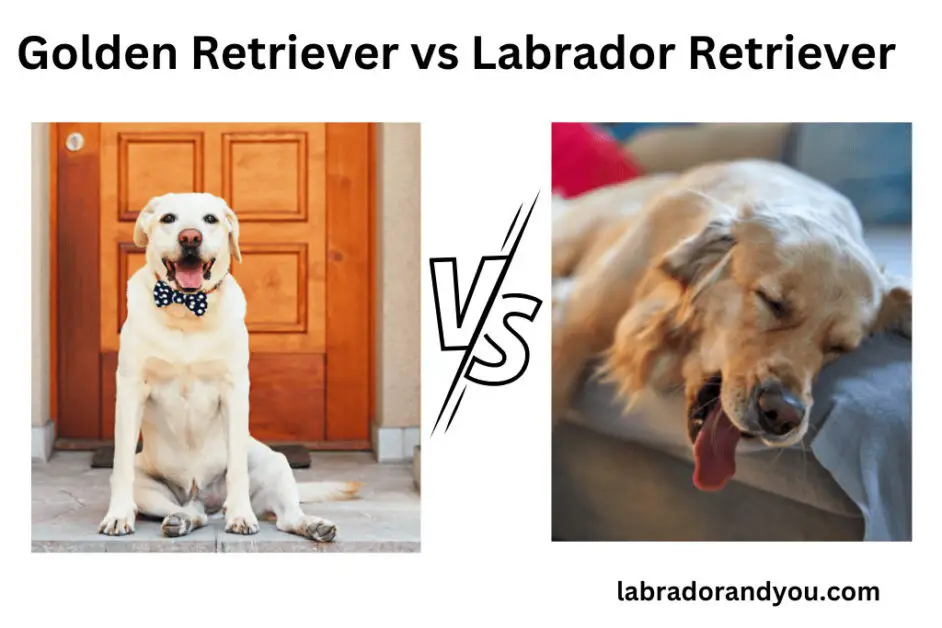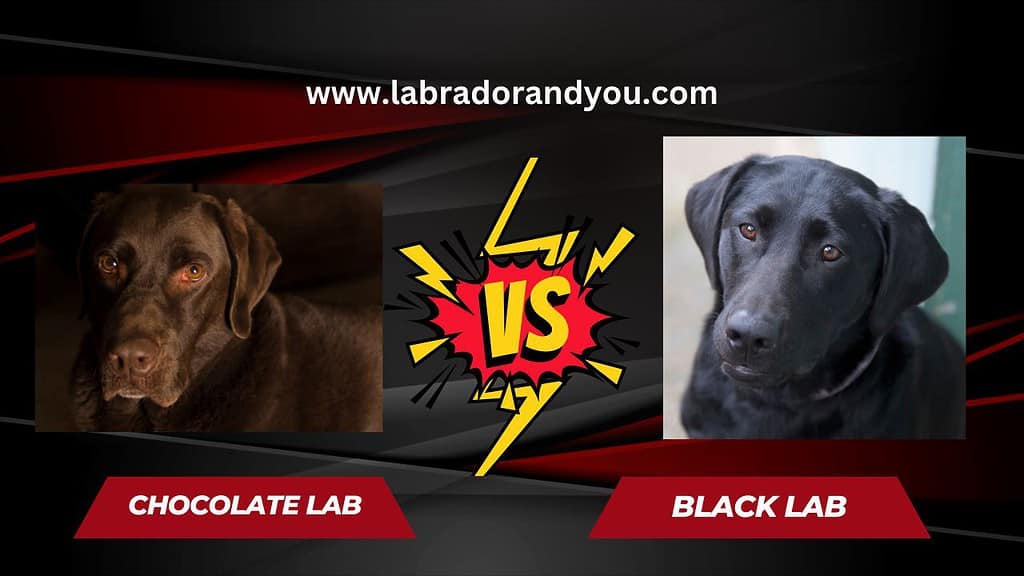Great Dane dogs have a massive size and gentle nature. Labradors are renowned for their intelligence and loyalty. Great Dane dogs are one of the largest dog breeds in the world, often weighing over 100 pounds. They have a regal appearance, with a muscular build and a sleek coat. They are typically very calm and affectionate despite their size, making them great family pets.
Labradors are medium-sized breeds. They have a thick, water-resistant black, yellow, and chocolate coat. Labradors are highly intelligent and easy to train, making them popular for service animals and police dogs.
Their friendly and loyal personalities make them great family companions. The final call comes down to lifestyle preferences and taste.
Physical Characteristics: Great Dane Vs Labrador Retriever
Both breeds have different grooming, exercise requirements, trainability, temperament, and physical differences.

Labrador Retriever Great Dane: Grooming, Coat, And Exercise
| Aspect | Great Dane | Labrador |
| Grooming | Requires regular brushing to remove dead hair, and occasional baths to maintain a healthy coat. | Requires more frequent brushing due to their double coat, which sheds seasonally, and regular baths to keep their coat clean and healthy. |
| Coat | Short, thick, and glossy coat with minimal shedding. | A short, dense, water-resistant double coat that sheds seasonally. |
| Exercise Requirements | Requires moderate exercise, such as daily walks and playtime. | Has higher energy levels and requires more exercise, including daily walks, runs, and playtime |
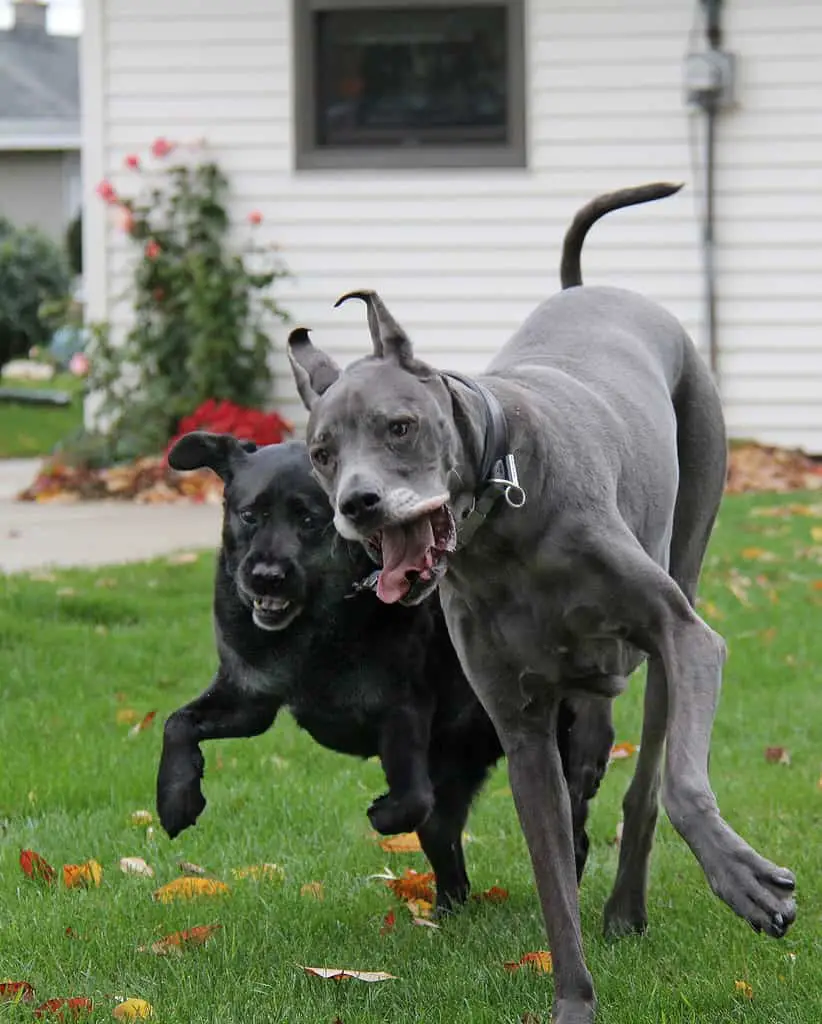
Labrador Retriever Great Dane: Trainability And Temperament
Great Danes and Labradors have different temperaments, which can affect their trainability. Danes are gentle giants known for being calm. Labradors are friendly and outgoing.
Great Danes Dogs may be slower to pick up new commands due to their laid-back personality. They are obedient dogs and respond well to positive reinforcement.
Labradors are highly trainable due to their intelligence and eagerness to please. They thrive on mental stimulation and physical activity. Great for first-time dog owners.
Great Dane is a more relaxed dog that doesn’t need much exercise or mental stimulation. Owners with an active life better suit Labrador Retrievers. They require much more exercise than Great Danes do.
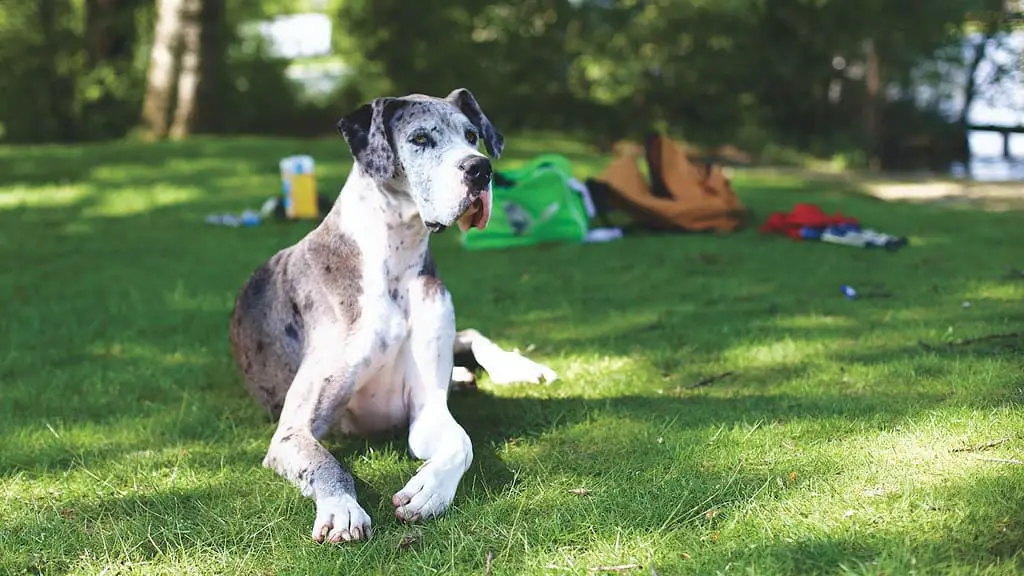
Labrador Retriever Great Dane Health And Lifespan Comparison
Great Danes are prone to hip dysplasia, acute moist dermatitis, and bloat. Labs are more susceptible to weight gain and joint problems. Danes live less than Labrador Retrievers.
Great Danes and Labrador Retrievers are generally healthy breeds. Here are some common health problems:
- Great Danes are prone to hip and elbow dysplasia, which can lead to arthritis or lameness.
- Both breeds are at risk for bloat, in which the stomach twists and traps gas inside.
- Labrador dogs have a higher risk of obesity, leading to joint problems and diabetes.
- Great Danes are susceptible to heart diseases such as dilated cardiomyopathy (DCM) and aortic stenosis.
- Both breeds may suffer from ear infections due to their floppy ears trapping moisture.
- Labradors may experience allergies, with atopic dermatitis being the most common type.
- Danes may have osteosarcoma or bone cancer, especially in their legs.
- Regular check-ups and exercise and weight management help prevent certain health issues.

Great Dane vs labrador retriever: Average Life Expectancy
On average, a Great Dane will live 6-8 years, while a Labrador can live between 10-14 years.
This does not mean that every dog of these breeds will have the same lifespan. Several factors can affect their longevity.
The main factor affecting a dog’s life expectancy is its overall health. Well-cared dogs with proper exercise routines, balanced diets, and regular veterinary check-ups live longer.
Living With Great Danes And Labrador Retrievers
Living with a Great Dane or Labrador Retriever requires a lot of attention. It includes space requirements too. Both breeds are pet friendly and make awesome family members.
Great Dane vs labrador retriever: Living Space Requirements
Great Dane dogs are larger and require more space to move around comfortably. They do well in large homes with outdoor areas. But they can adapt to smaller spaces if given enough exercise.
Labradors are more adaptable when it comes to living spaces. They can thrive in small apartments as long as they exercise enough daily.
Both breeds need a safe and comfortable place indoors to rest and sleep undisturbed. This could be a cozy dog bed or crate that gives them a sense of privacy and security.
Keep your home clean and uncluttered. Ensure your dog has plenty of room to move around without knocking over furniture or causing damage.
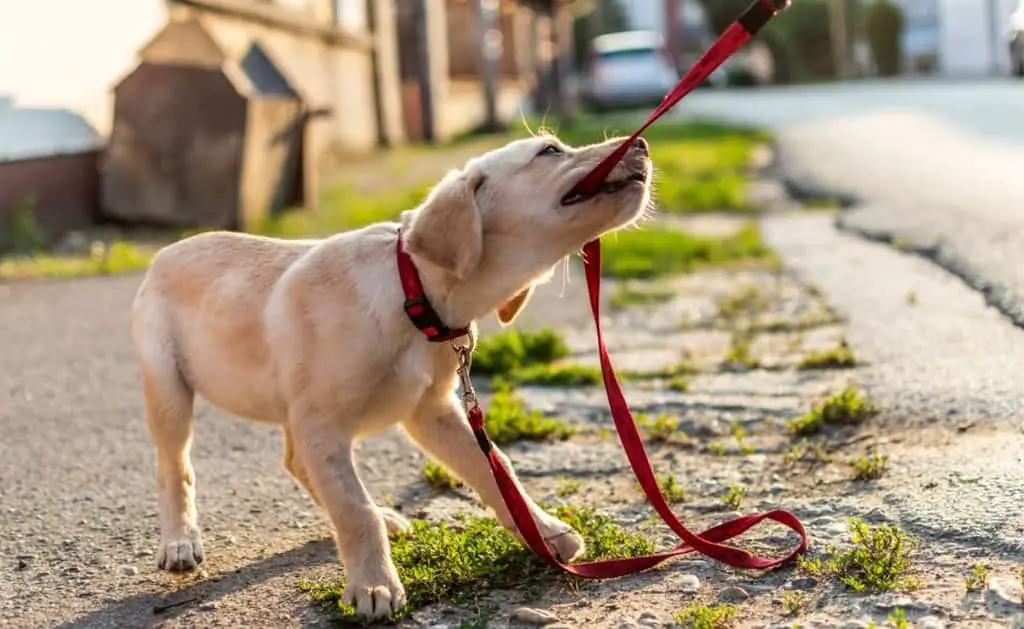
Great Dane vs Labrador Retriever: Affection And Proper Socialization
Both make for loyal companions and get along with small children. Their socialization needs differ slightly.
Danes are more reserved with strangers. They require proper training to become comfortable around new people. They are also extremely attached to their owners and crave attention and physical touch.
Labradors have naturally sociable personalities. They thrive on human interaction, playtime, and physical activity.
Both breeds require consistent positive reinforcement training from an early age. Socializing your furry family member improves their behavior in public. It helps them develop self-confidence.
Both of them are prone to separation anxiety if left alone for a long time.
Which Breed Is For You: Great Dane vs Labrador Retriever
Personal Preferences And Lifestyle Considerations
A Great Dane may not be the best fit if you live in an apartment or have limited outdoor space. They are large-sized and have more exercise requirements.
However, Danes are excellent if you enjoy spending time outdoors with your dog or have a larger living space.
The Labrador Retriever is a better choice if you’re looking for a dog adaptable to different lifestyles.
This breed does well in all kinds of homes, from city apartments to suburban houses with yards.
Think about shedding as well. Great Danes shed less and have lesser grooming needs than Labradors.
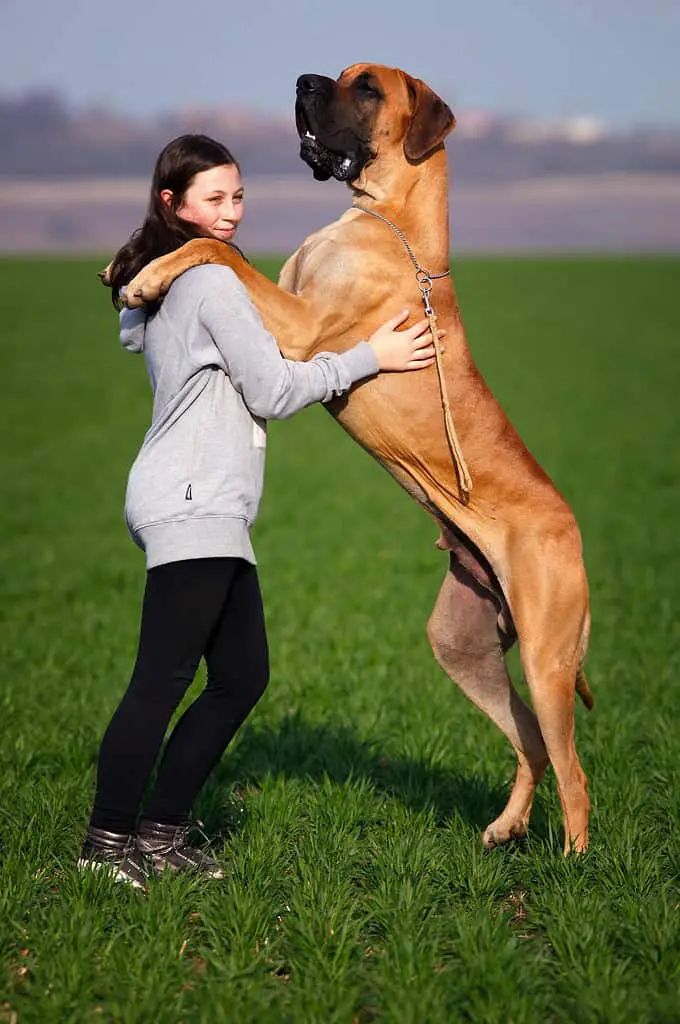
Activity Level And Exercise Needs
Danes require daily exercise. Their exercise requirements are not as high as those of Labradors.
Great Dane owners should aim for at least 30 minutes of moderate exercise daily. Walk or playtime in the backyard would do.
Labradors are high-energy dogs that require more exercise than Great Dane dogs. They love to run around and play fetch. A minimum of one hour of vigorous activity per day is recommended for Labradors.
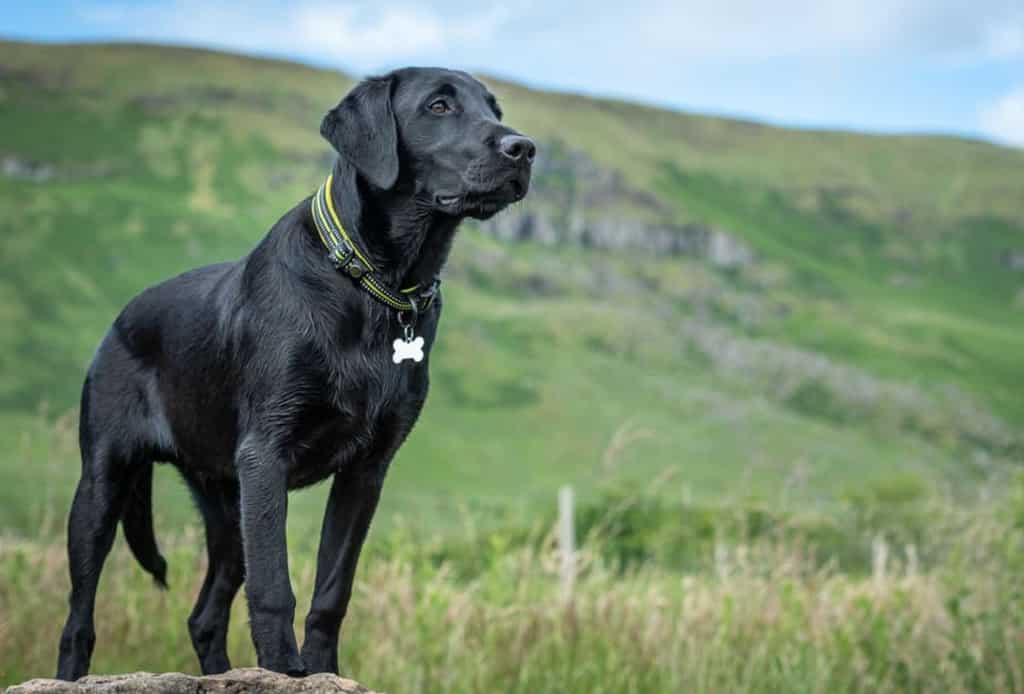
Great Dane vs labrador retriever: Hot and Cold Weather Tolerance
Great Dane dogs have lean builds and short coats. It makes them sensitive to cold weather. This giant dog can only handle a walk around the block during winter.
Keep a winter jacket handy if the winter excursion lasts more than a few minutes. Pet parents must be aware if the temperature falls below 20 F.
A labrador retriever can thrive well in both cold and hot weather. Bring your labrador inside if the mercury soars above 90 degrees Fahrenheit.
Most labrador dogs cannot tolerate temperatures below 68 F. Not every labrador retriever reacts in the same way. Healthy dogs are less likely to get severely affected by cold weather.

Great Dane vs labrador retriever: Drooling Potential
Great Dane dog breed can drool in a moderate amount. It is due to their square muzzles, loose lips, and large size.
Some Danes can drool excessively. Genetics, emotional triggers, and environment play a crucial role.
Most labrador retrievers do not drool much. If your labrador retriever is suddenly drooling too much, consult a vet.
FAQs: Great Dane And labrador retriever
Is a Great Dane a lab?
The easygoing Great Dane is a large dog breed. It is a separate dog breed from a Labrador retriever. They tower over most dogs when standing on their hind legs.
Both the Great Dane and the Labrador retriever are big dogs. However, Danes are extra large.
Are Labradors the smartest dog?
Labrador retrievers are among the smartest and most popular dog breeds registered by the American Kennel Club. A labrador retriever makes an excellent service dog, therapy dog, etc.
How intelligent is a Great Dane?
An average Dane is considered as clever as a three-year-old human. They are capable of understanding about 250 words and gestures. Danes are quick at learning new commands. Their working history makes them highly intelligent.
What are Great Danes known for?
Great Dane is a working dog that originated about 400 years ago in Germany. They were earlier used for boar hunting. Danes are alert and swift. They are famous for their friendliness, courage, and dependability.
Are Labs the friendliest dogs?
A labrador retriever, compare to other dogs, is the friendliest breed. They are exceptionally friendly with young kids and other pets.
What is the calmest Labrador retriever breed?
Yellow labrador retriever has been bred more for therapy and service roles in the dog world. It means they are calmer than other labs. Several yellow labs come from the English pedigree. English labs are said to be calmer than their American counterparts.
Is A Great Dane the most powerful dog?
A Great Dane is among the strongest dog breeds. They are generally gentle giants but can become aggressive. Danes are territorial and can attack without warning. A bite from the Great Dane can have a life-altering impact.
Author Profile
- Site Owner And Dog Lover
-
Aritra, the founder of Labradorandyou.com, is a lifelong dog lover whose passion ignited for Labradors for their loyalty and intelligence. With extensive research and personal experiences, Aritra has become a Labrador expert, offering a rich resource on the breed. Labradorandyou.com provides reliable, timely, and evidence-based information, including Labrador-specific product reviews, training techniques, and care tips.
Labradorandyou.com was born out of Aritra's passion and his desire to share his profound knowledge about the breed. The site serves as a comprehensive resource, offering a wealth of up-to-date information for Labrador owners and enthusiasts alike
Also by the author
-
 Lab-TypesNovember 17, 2023Old Dog Seizures: Causes, Symptoms, and Treatment Options
Lab-TypesNovember 17, 2023Old Dog Seizures: Causes, Symptoms, and Treatment Options
-
 Lab-TypesNovember 17, 2023Why Is My Dogs Poop Yellow? 8 Reasons & Solutions
Lab-TypesNovember 17, 2023Why Is My Dogs Poop Yellow? 8 Reasons & Solutions
-
 ReviewsNovember 17, 2023The Only Hill’s Science Diet Review You Need To Read
ReviewsNovember 17, 2023The Only Hill’s Science Diet Review You Need To Read
-
 Lab-TypesNovember 17, 2023How To Adopt An Emotional Support Dog?
Lab-TypesNovember 17, 2023How To Adopt An Emotional Support Dog?
